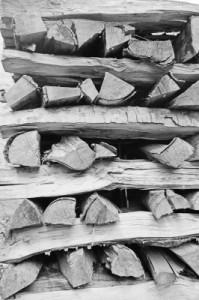It is that time of year when people start to gather their firewood for the upcoming winter. If you had trouble getting your fires started or they went out almost as quickly as they started, you know how frustrating it can be to have the wrong firewood in your fireplace on a cold night. Here are a few tips to find the best wood for your winter needs.

Image courtesy of David Castillo Dominici / FreeDigitalPhotos.net
- First and foremost, make sure your wood is treated and dried. In order for wood to burn properly, it needs to have been dried out for the proper amount of time (at least one year). Check the wood for signs of proper aging and properly cracking wood.
- Know what type of wood you are buying. For instance, pine burns extremely quickly, whereas oak will burn very slowly and last for quite some time. Telling the breeds of wood from one another is fairly easy and you can research the characteristics on the Internet if you are not already familiar with the nuances of each type of wood.
- Go through your wood carefully before purchasing. Sometimes, either inadvertently or purposefully, distributors will have fresh wood or bad burning woods, such as white oak, mixed into the lots. If you are able, remove these pieces so you are getting the most for your money.
- Once you get the wood home, avoid covering it with a tarp. This will keep the moisture in and prevent the wood from continuing to dry out. In order to properly measure moisture content in firewood, you’ll need a firewood moisture meter. If you store large amounts of firewood at home, you are better off investing in a woodshed or crib.
- When storing wood, make sure you rotate out your supplies. While seasoned wood does burn better, letting the wood get too old will also cause problems. Once wood hits the four and five-year range, it starts to deteriorate and is not as effective for fireplace burning.
